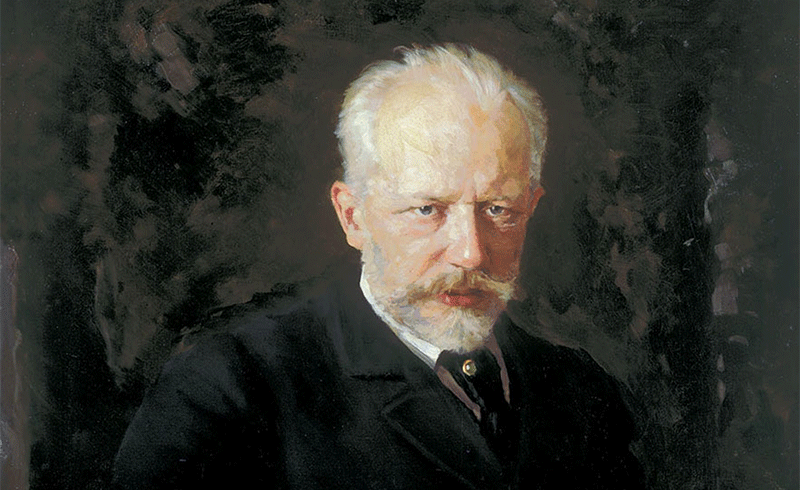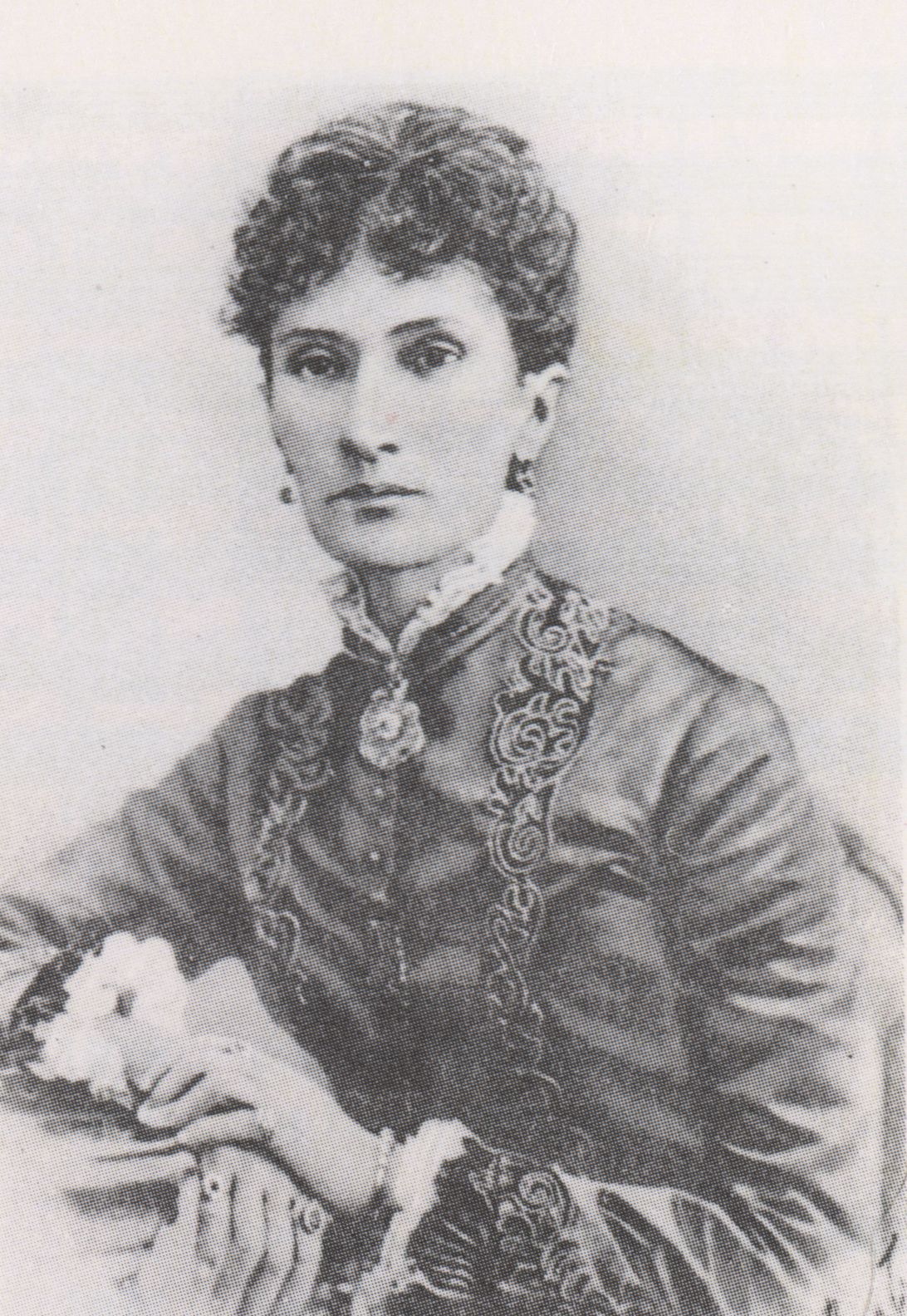
January 19, 2024
Opprobrium and Patronage: Tchaikovsky Symphony No. 5
Join the Houston Symphony and Artistic Partner Itzhak Perlman on February 8, 10 & 11 to experience the majestic triumph of Tchaikovsky’s Symphony No. 5.
In May of 1888, Pyotr Ilyich Tchaikovsky wrote to his friend and patron, Nadezhda von Meck, “I must work harder in the future; I want so much to show not only to others, but to myself, that I still haven’t expired… I don’t know whether I wrote to you that I had decided to write a symphony. At first, it was fairly difficult; now inspiration seems to have deserted me completely.”
At the time of his letter, it had been 10 years since Tchaikovsky’s last symphony. One New York Post critic said the fourth symphony “proved to be one of the most thoroughly Russian, i.e. semi-barbaric, compositions ever heard in the city... If Tchaikovsky had called his symphony 'A Sleigh Ride Through Siberia' no one would have found this title inappropriate."
Throughout his career, Tchaikovsky would meet the wrath of numerous music critics, but perhaps none of them were as harsh as the composer himself. Though reactions from critics would take their toll on the self-doubting composer, Tchaikovsky, with the support of his dedicated patron, would persevere to create works that today reign among the greatest of compositional achievements.
“To My Best Friend”
Nadezhda von Meck seems to have developed a deep passion for music from her father, who was an amateur violinist. Her husband, Karl von Meck, achieved major financial success as a railway tycoon. His death in 1876 left von Meck in charge of her late husband’s commercial empire. With the considerable fortune left to her, von Meck financially supported young musicians in Russia, particularly the Russian Musical Society. Her husband’s death, however, also led her to live a more reclusive life. It was in this secluded state that she established and carried on her correspondence with Tchaikovsky. In fact, as a stipulation of her patronage toward the composer, the two were to never meet in person – a condition they stuck with throughout their nearly 14-year correspondence.
The fact that the two never met is remarkable, considering that in von Meck, Tchaikovsky found not only a patron, but a confidante with whom he expressed his innermost thoughts and artistic process over the course of over 1,200 letters between them. The composer once wrote to her:
The most beautiful moments of my life are those in which I see my music capture the hearts of those I love and whose involvement is more valuable to me than fame and success with the public. I don’t need to tell you that you are the person I love with all my heart. For I have never met anyone like you, whose soul would have been so familiar to me, who would have responded so sensitively to my every thought, to every beat of my heart. Your friendship is as indispensable to me now as the air I breathe, and there is not a moment in my life when I am not thinking of you.
Tchaikovsky had dedicated his fourth symphony to his “best friend”, and now ten years later, something new was stirring.
“No Worse Than My Previous Ones”
In August of 1888, Tchaikovsky wrote to von Meck, “Now, as the symphony nears its end, I can view it objectively, and at the culmination of the work, I must say that, thank God, it is no worse than my previous ones. This accomplishment means a great deal to me!”
In August, he sent this update: “I am so pleased that my symphony is safely finished… My symphony is ready, and I think that I have not miscalculated, that it has turned out well.”
The process had been challenging for the insecure composer. He had initially written a broad programmatic outline for the symphony:
Programme: 1st movement of symph[ony].
Intr[oduction]. Total submission before fate, or, what is the same thing, the inscrutable designs of Providence.
Allegro. 1) Murmurs, doubts, laments, reproaches against... XXX
II) Shall I cast myself into the embrace of faith???
A wonderful programme, if only it can be fulfilled.
Tchaikovsky scribbled ideas for other movements but ultimately decided to move forward without a program. Although we cannot be certain how much of the initial program remained with Tchaikovsky throughout the symphony’s composition, a struggle with fate seems to be at the heart of the work.
The “fate” theme that appears at the symphony’s outset, like the idée fixe of Berlioz’s Symphonie fantastique, will reoccur in different guises in each movement, until ultimately the theme breaks through in victorious fashion – ending the symphony in a blaze of triumph over doom.
Though the Saint Petersburg premiere later that fall was met with some enthusiasm, subsequent performances faced harsher criticism. In December Tchaikovsky wrote to von Meck:
Having played my Symphony twice in Petersburg and once in Prague, I have come to the conclusion that it is a failure. There is something repellent in it, some over-exaggerated color, some insincerity of fabrication which the public instinctively recognizes. It was clear to me that the applause and ovations referred not to this but to other works of mine, and that the Symphony itself will never please the public.
However, Tchaikovsky’s view of the symphony changed the following year after Brahms expressed his admiration for the work following a performance in Hamburg. Tchaikovsky, with financial and emotional support from von Meck, persisted through criticism of his work to create pieces that today make up repertoire staples of symphony orchestras, ballet companies, and chamber ensembles all over the world. On Tchaikovsky’s Violin Concerto, critic Eduard Hanslick famously declared:
The violin is no longer played; it is pulled, torn, shredded... We see plainly the savage, vulgar faces; we hear curses, we smell vodka. Friedrich Vischer once observed, speaking of obscene pictures, that they stink to the eye. Tchaikovsky’s Violin Concerto gives us for the first time the hideous notion that there can be music that stinks to the ear.
What Hanslick called a “long and pretentious” concerto is now one of the most popular and frequently performed pieces of the orchestral repertoire. As the Finnish composer Jean Sibelius once said, “A statue has never been erected in honor of a critic.”
Join the Houston Symphony for more music built on struggle and transcendence with the Tragedy and Triumph festival on March 15, 16 & 17, plus March 22, 23 & 24. From the “hammer blows of fate” in Mahler’s monumental 6th Symphony, to the hero’s triumph of Beethoven’s Symphony No. 3, The Eroica, these performances will celebrate the strength of the human spirit in the face of adversity.








